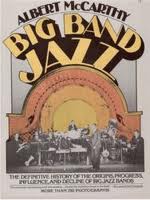Big Band

On this page of our journey into the history of jazz music we focus on pre Big Band era jazz music history as recorded before 1935. We use this date and classification of this period of jazz for timeline measuring-stick purposes only. Although most historians regard the year 1935 as the start of the Big Band era, it is still a debatable topic as big band jazz had indeed been recorded as early as the 1920s.
In 1917 the Original Dixieland Jass Band cut the first recorded jazz records in history. It is a pity the honor could not have been bestowed upon a true pioneer of the genre. Most jazz historians regard this small group as simply a poor copycat band, lucky to ever have been recorded. Nevertheless, their recordings sold over a million copies and enabled jazz to be heard all over the country.
Jazz began its development in New Orleans where King Oliver, a cornet player that Louis Armstrong idolized, was performing in the early 1900's. Steamboats using the Mississippi further helped spread the sound of jazz as many of the New Orleans jazz bands and musicians performed as entertainment on the boats.
In the 1920s the music of jazz began to migrate to a big band format combining elements of ragtime, black spirituals, blues, and European music. Duke Ellington, Ben Pollack, Don Redman, and Fletcher Henderson sported some of the more popular early big bands playing hot music. These bands contained burgeoning jazz stars and future big bandleaders like Coleman Hawkins, Benny Goodman, Glenn Miller, Red Allen, Roy Eldridge, Benny Carter, and John Kirby.
While the aforementioned musicians were playing big band jazz; the popularity of the hotel dance bands of the 1920s was also an important factor in the evolution of the Big Band era. Paul Whiteman, The California Ramblers, Ted Lewis, Jean Goldkette, and Vincent Lopez were a few of the successful hotel dance bandleaders of the 1920s. Their main sources of revenue came from playing for ballroom dance crowds and doing radio remote broadcasts in the 1920s and early 1930s.
The hot jazz orchestras of the day soon found the necessity of using an "arranger" for their pieces of music. His job became an all-important function in the making of big band jazz. While small group jazz had previously allowed a group of musicians to basically just "blow," structure became necessary with large gatherings of musicians. Although improvisation in solos was still allowed, the arranger took a written piece of music and assigned various parts to the different sections in a band and also dictated when solos were to be taken. The big band sounds of The Dorsey Brothers, Fletcher Henderson, Cab Calloway, The Casa Loma Orchestra, and Duke Ellington's orchestra as well as the styling in jazz vocals of The Mills Brothers and The Boswell Sisters were all moving toward an "arranged" and easy flowing style of jazz which would become known as swing.
With this new structure and sound the stage was set for the rise in popularity of big band music, played in this new swing style, that took the country by storm in the mid 1930s. The popularity of the music increased as Americans invented exciting, new, dances to be done in rhythm with the music. The Savoy Ballroom in Harlem opened its doors in 1926 and later became a hotbed for swing bands during the Big Band era. It was here that a swing dance style called the Lindy Hop was named, refined, and popularized. Through the press, through recordings, and through live radio remote broadcasts the masses were about to hear about this new swing music and dance craze.